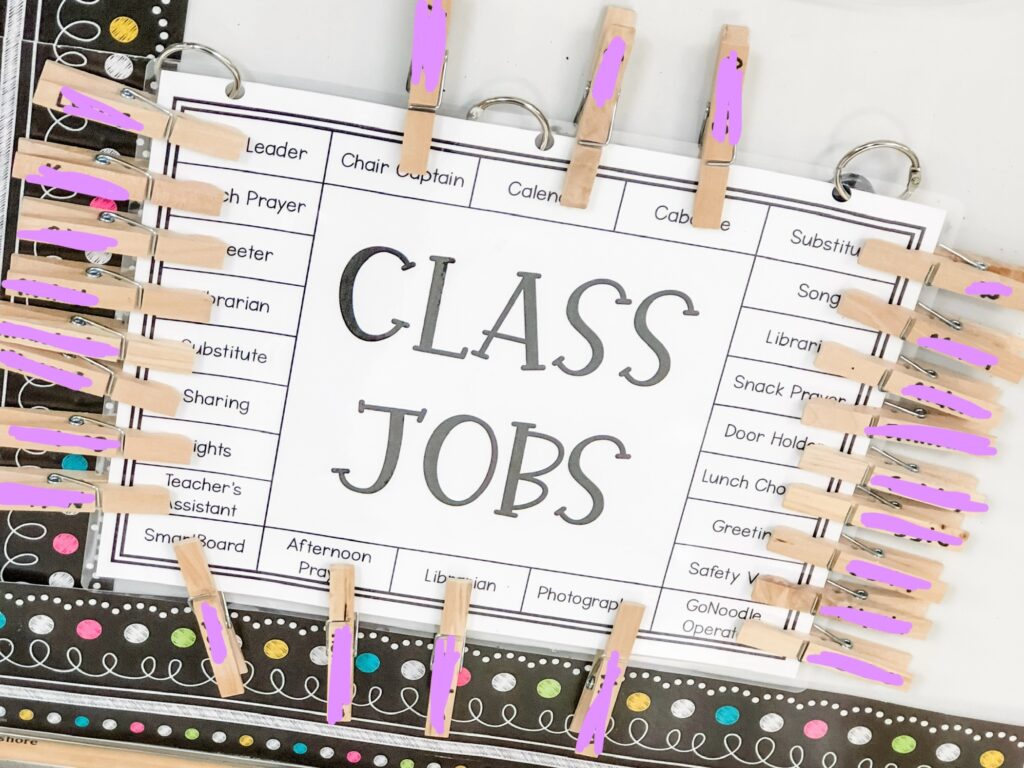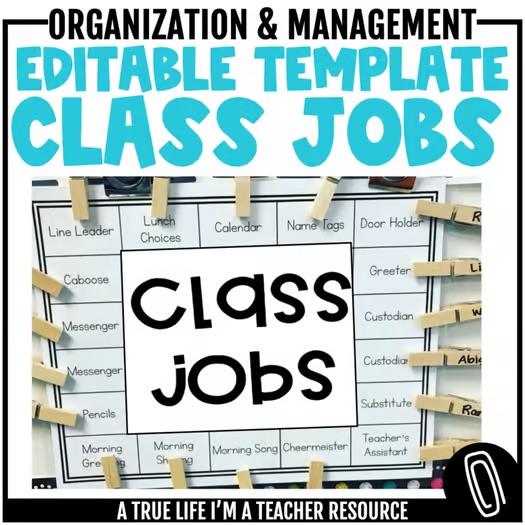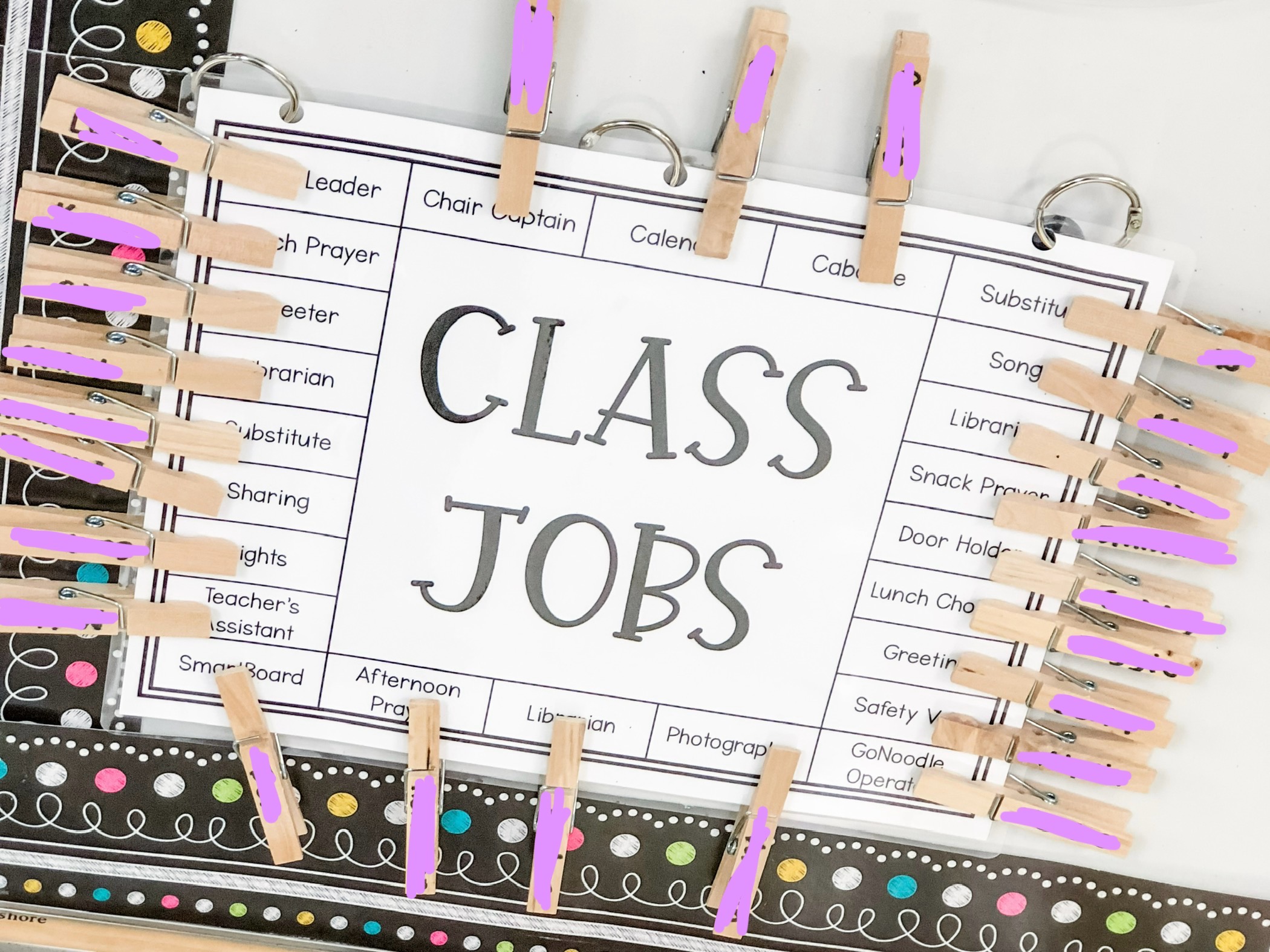Discover how to easily manage class jobs to help improve student engagement, responsibility, and classroom community.
Incorporating classroom jobs can enhance the learning environment by helping foster a sense of responsibility and community among students. Class jobs are also an effective way to engage students actively in their education while teaching essential life skills.
Do classroom jobs even matter?
Classroom jobs offer numerous benefits. They promote student engagement, build a sense of community, and teach valuable life skills such as responsibility, teamwork, and time management. When students take on classroom roles, they feel more invested in their learning environment, leading to improved behavior and academic performance.
You’ve probably guessed that I’m a MAJOR fan of class jobs – I mean…many hands make light work, right? I also know that managing class jobs can feel like a hassle. But it doesn’t have to be.
Aside from having 25 or so helpers around the classroom, there’s a whole bunch of other reasons I think class jobs are super important:
- Promotes Responsibility and Accountability
- Assigning class jobs teaches students to take ownership of their tasks. They learn to be accountable for their duties, which fosters a sense of responsibility and prepares them for future roles in life.
- Enhances Student Engagement
- Classroom jobs actively involve students in the daily operations of the classroom, making them feel more invested in their learning environment. This increased engagement can lead to better focus, participation, and overall academic performance.
- Builds a Sense of Community
- By working together to maintain and manage the classroom, students develop a sense of belonging and teamwork. Classroom jobs encourage collaboration and mutual respect, helping to create a positive and supportive classroom culture.
- Develops Essential Life Skills
- Class jobs provide students with opportunities to learn and practice crucial life skills such as time management, organization, communication, and problem-solving. These skills are not only vital for academic success but also for personal and professional development.
- Encourages Independence and Leadership
- Assigning jobs to students encourages them to become more independent and take initiative. As they grow more confident in their abilities, they can take on leadership roles within the classroom, further enhancing their self-esteem and leadership skills.
How to Manage Class Jobs
For classroom jobs to have the most impact, each student needs to have a job. The message is that everyone has a job, everyone is important, everyone is valued, and everyone is needed to help our classroom run smoothly.
And you might be thinking, “but I have 25 students, how in the world am I supposed to manage all those jobs without losing my mind?”
I get it. I typically have between 24-27 students and on top of that I have very little space to have any sort of display.
The answer to lots of students, but very little space means that simple but highly effective wins. And honestly, why should simple but highly effective win all the time?
To easily manage class jobs, I created a one-page (yes, really) chart that I just move clothespins around whenever it’s time to rotate jobs.

Here are the answers to some of the questions I get asked about my job chart and how I easily use it manage class jobs.
Q: Does every student have a job?
A: Yes. One year, I only had 14 (DREAM). But I’ve also had as many as 27. And then of course, students leave in the middle of the year or new students join. As the numbers fluctuated, I just doubled up on some jobs, or left some jobs empty.
Q: How often do you rotate jobs?
A: I’ve figured out that the sweet spot is weekly. But I’ve had years when I’ve done every two weeks.
Q: Do you have your class job chart available?
A: Yes. Editable templates are available HERE.
Q: What does the “Cheermeister” do?
A: Our cheermeister gets to choose what classroom cheers we do whenever we celebrate someone or something.
Q: What supplies will I need?
A: ONE piece of paper {colored cardstock would be beautiful}, one clothespin for each student in your class, laminate {optional, but recommended}.
Q: How does it work?
A: Each student has a clothespin with his or her name on it (class numbers also work well). As often as you want to rotate jobs, just move each clothespin to the next job. It’s that simple.
Everyone’s class/room is different, and my job chart and jobs may not work for you. So I made EDITABLE templates with spaces for 5, 6, 7, 8, 9, 10, 16, 18, 20, and 25 jobs. All you have to do is choose the number of jobs you want, and then type in the names of your jobs. Print, laminate, and you’re ready to go!
Remember, you don’t have to have the same number of jobs as students. Rather, double up on some jobs that can benefit from having more than one student (substitute, librarians, trash squad). You can also include “vacation” which means a student has the week off.
You can find the editable templates HERE, or by clicking the picture below.

Interested in more ways to improve student engagement, responsibility, and classroom community?

